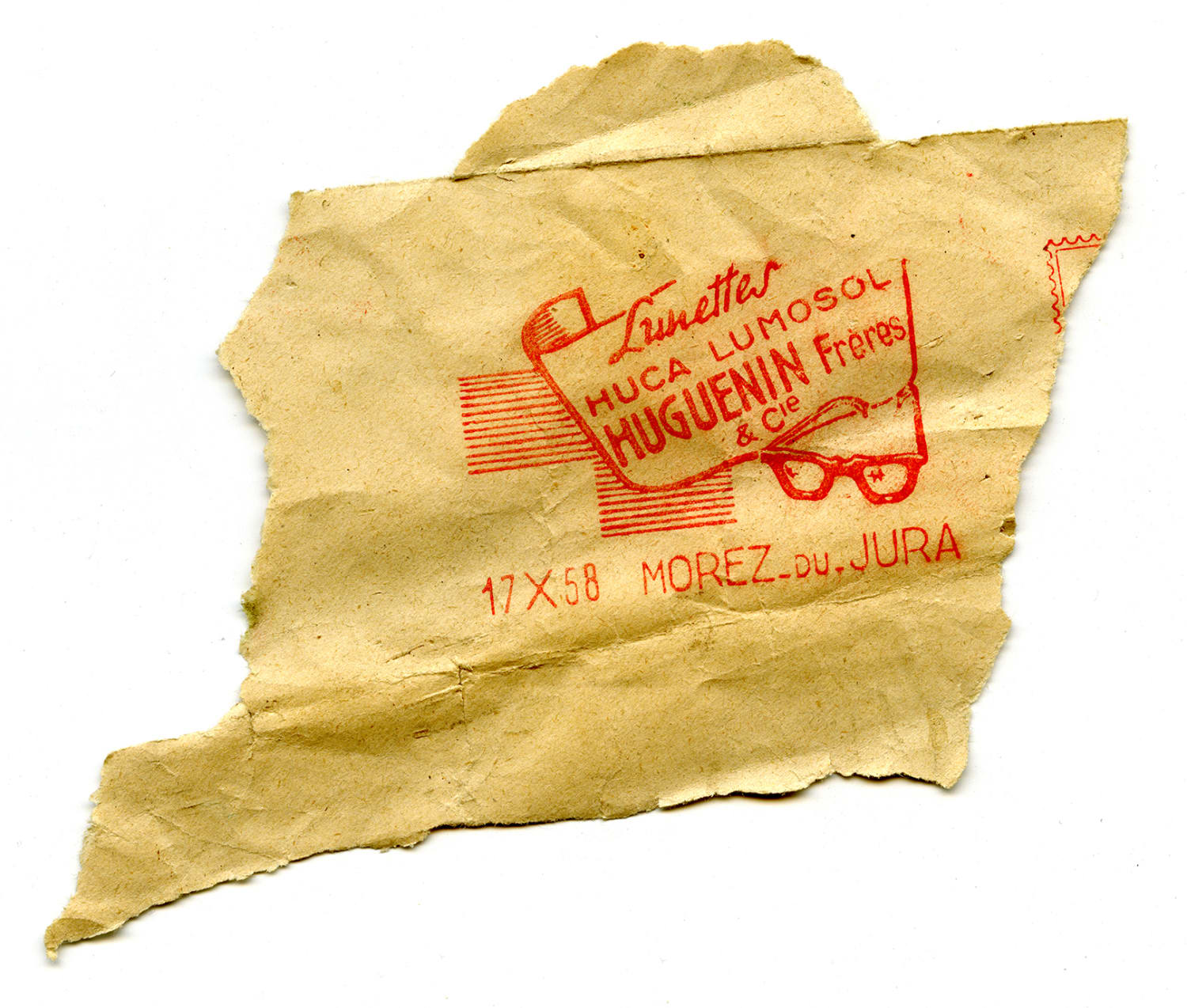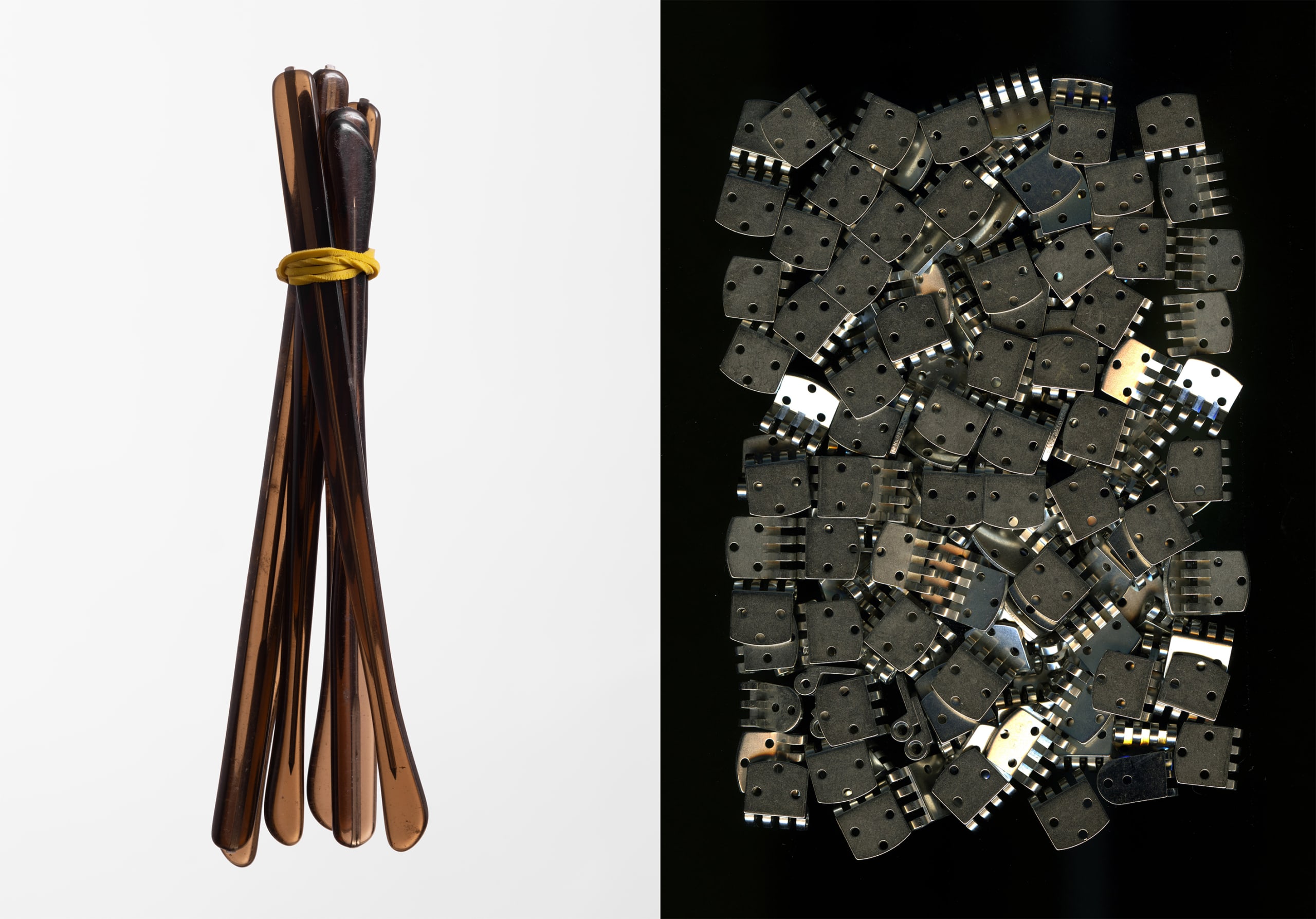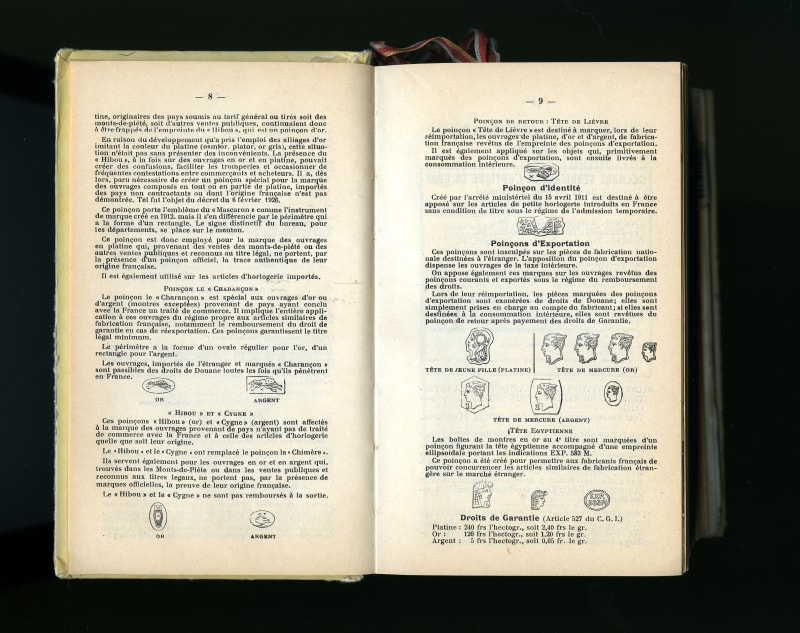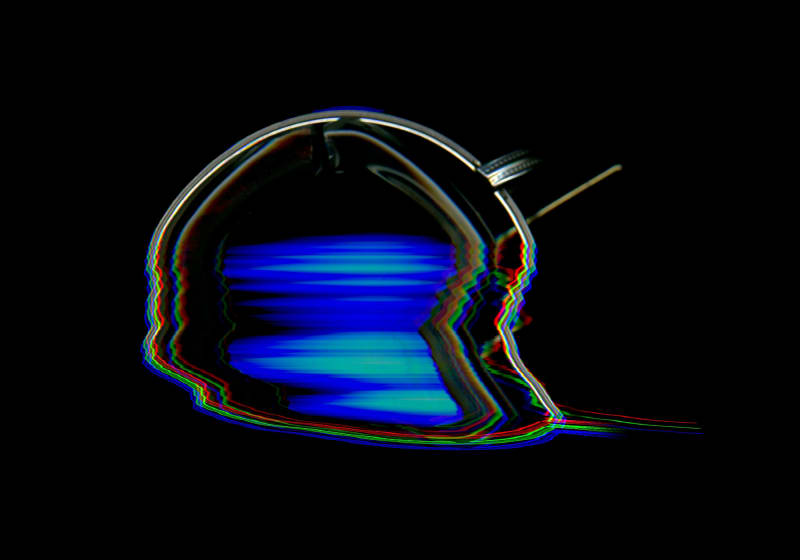Since our inception back in 2013, while unearthing new-old stocks of glasses, we’ve collected many raw, incomplete frames and parts from different eras along the way, inspiring us to assemble and finish these gems by hand ourselves instead of seeing them waste away. A decade later, through the FRONTs project, we handcraft frames using parts initially destined to be forgotten, trying to avoid new materials and creating a unique and unexpected blend of history—all that in our basement here in Brussels.
Over the years of routinely working on glasses repairs, hacks, upgrades and restorations, we’ve saved some pretty beat-up frames from extreme mishandling cases and got more in touch with our pieces. We developed an understanding of how glasses feel under stress and learnt to determine and improve each part’s longevity. With this built-up knowledge and with insights from fellow colleagues to better our machine mastery and measurements, we finally got the confidence to embark on a project of hand assembling and finishing frames made of parts coming from different places and periods of the 20th century.
Unboxing an unexpected treasure
After a dig, between customers or repairs, we always try to find a moment to gather around and hide in the stockroom for an unboxing session. Sometimes, it’s a long-awaited order we’ve pre-inspected through images sent back and forth. Other times, it can be a bit of a surprise with exciting pépites, although we’re never really safe from ending up with some very underwhelming meh’s and total disappointments either.
On this day in August 2023, it was an unmarked crate that arrived at our door. We took it downstairs, and we can safely say it was unlike anything we’d seen before.

A layer of newspaper from April 1965 reading “Le Progrès”, “OYONNAX” was wrapping the content underneath: hundreds of flat and smooth, neatly stacked brown-reddish translucent plates of an early form of plastic, potentially injected celluloid or acetate. All the same size, flat with a small central bump, thin and light, yet sturdy. We counted them: 220 pieces of crown-pantos fronts from the 1940s-1950s.
Spoiler, only about fifty would make the cut.

The crate offered few clues about its origin— just the newspaper’s date and location, along with a torn note from Huguenin Frères et Compagnie. ‘Lunettes Huga Lumosol’ from Morez du Jura (FR), it said, with an older frame sizing indication of 17X58. From there it’s only speculation: the company could’ve collaborated on the frames by subcontracting to some Oyonnaxian manufacturer… But the details remain uncertain.
All we knew was that we had some mid-century frame fronts in our stockroom, and although our end goal was crystal clear, we had yet to determine how to get there as we neither had the complete knowledge nor the tools to work on them. Also, some pretty major parts *cough* all of them *cough* were missing. So on we went for another deadstock quest for temples, hinges, and things as such, while Mathias worked on honing his workshop and his skills.

Some specifics on the materials/ the Plastic Valley of Oyonnax (FR)
In the 1800s, items like piano keys, hair combs, and billiard balls were commonly made from ivory, bones, and shells. The Valley of Oyonnax and Saint-Claude (FR) were major players in this industry until overhunting led to resource depletion. However, around 1870, celluloid was patented as an alternative, so ‘thankfully’ (the consequences of industrial mass-made plastic were clearly not their problem), Oyonnax made the switch.
— Fancy a bit more reading? More on the industrial story of Oyonnax on our other post: Riding SOLO
Celluloid isn’t perfect; it emits quite a strong and distinctive camphor smell and requires strict conservation conditions. Not so incidentally, it was known to have spontaneously sparked a fire or two (or more), hence its later replacement by acetate: the non-flammable and less chemical now-industry-standard cousin.
Back to our frames: due to the scarcity of the material, it was pretty unlikely that the fronts we had were made of tortoiseshell or any other animal byproduct. And a box full of intact-looking ‘cellulo’ frames without that Tiger Balm aroma seemed then a bit too good to be true. But they did feel quite silkier than acetate… So, we knew what we had to do, and after listening to our inner pyromaniac tendencies (with an extinguisher close-by of course), we concluded that indeed, we had authentic 1940s-50s celluloid parts in our burnt-up hands.
Another find: Temples and hinges
During our quest for smaller parts, we aimed to stick to a maximum of older temples, hinges and other components, which complicated our search a bit… You know, landing on a crate of forgotten fronts is already a pretty uncommon thing, so we weren’t expecting to find another lot with the remaining items and build-your-own-frame manual included, that’s for sure.
Nonetheless, it’s kind of what happened, and it felt almost like a fever dream when a few months after sending us the fronts, the same fixer from Lyon (FR) gave us a call.
‘ – I have temples, he said.
– We’ll take them all.’
And there we were, swimming in a sea of blondes and ambers, blues, lilacs and other bright ‘poissons’ … thousands and thousands of multicoloured, left and right sides all together, raw and unsorted 1970s acetate temples.

While sorting all of the pieces we had by material, colour, shape, and size, we searched for the remaining subcomponents; we put our best data recollection skills to work, talked with a few of our Jurassian friends, and on our way to Morez for our usual glasses stock trips, a box of locally manufactured mid-century hinges, screws and rivets was waiting for us.
Then, boom. Our search bore even more fruit as we landed on another beautiful box, adding to our collection, this time with some pantos and square-shaped acetate fronts that we suspect come from Morbier’s Bourgeois.
With all the elements now available and displayed on our desk, it was now a matter of learning, crafting, trying and failing, trying again, asking for help and, lastly, getting there…Eventually.

Let’s get cooking
If you’ve been at Bidules, chances are you’ve seen Mathias cause he’s been a key member since Day 1 of the Ravenstein store. Today, he is the repair/restoration final boss here, so we sought his insights and observations on the project.
Throughout our twelve years of digs, we’ve had our fair share of ill-conserved, cracked and dried-up frames, some going back a century. Having experienced poorly stored frames before, we found out quite fast that many of the fronts were in worse condition than expected. Some were also much thinner, and others had prior modifications that didn’t fit our current assembly process. So, aside they went for future testing and experimentation. And just like that, by looking at them with better eyes, we went from 220 parts from that first crate to way, way less. About fifty, to be exact-ish. Then we repeated the selection process for the second box and temples as well.
When it comes to the smaller parts, newly manufactured hinges and rivets have a set of instructions with standardised measurements, but older stock has close to no info. So it was up to Math to find it and sketch it all out: micromillimeters of data, crucial for proper placement of hinges and rivets on a frame. Not only does it ensure a good-looking, symmetrical and aligned pair of glasses on the face, but also a comfortable and especially sturdy one at that.

So we’ve gathered, felt, measured. The following insertion steps, done hand in hand with our beloved tools, are really the ones that can make or break a frame. Literally. Afterwards, once the drilling, melting, drying and waiting are done, the dismantled pieces are just shy of becoming a pair of glasses, leaving only some finishing and shaping ahead.
Now, these next few steps apply to every single one of our frames, regardless of their previous condition.
Downstairs, the finishing process begins with a gentle rumble and a softly high-pitched hum as the polisher’s wax-covered wheels work on the front piece and temples. The buffing starts and occasionally stops for Mathias to inspect, wipe off the residue, and go back in for more smoothing of the edges. One step to the right and the shammy leather takes the wheel to give the parts their final shine.
Put the pieces back together, do a wee bit more filing, heat the frame up, arch out the front, bend the temples to give their true shape, and voilà. Some pretty nice frickin’ glasses.
We placed our newly born, still warm mod.01 on the windowsill to share its first days with the late-winter sun after being tucked away for so many years. The Gargoyle hadn’t had its name found yet, but after one single week, on March 1st, 2024, we saw the frame leave Bidules sitting on a happy customer’s nose. There we were, set and preparing the second pair of glasses, and then the third. FRONTs was now launched and sent off into the world for all to see.
✦ “So in a way, are these unique?” ✦
With each individual front, temple and hinge having their independent technical specificities, every FRONTs assembly goes through a specific process to ensure good part-to-part compatibility. And with each part’s stock being limited, it implies having to adapt and rethink every step of each pair we assemble with experimentations and different techniques, whether it’s on the design of the temples, their angles, the placement of the hinges, a front’s specific shape etc. – all by hand. Even when we have a handful of the same set of front and temples (and therefore make multiples of one model), there are variations in the assembly work itself, making in the end every frame unique.



✦ “Will you make sunnies?” ✦
Glasses are, beyond being a beautiful object, a necessity for lots of people. Given the work we put into them, their specific and optometrically ideal sizes (smaller-sized frames allow for a thinner lens and thus a more aesthetic optical frame, particularly for very strong corrections), the unique aspect of the frames and the history they have, we would love for our FRONTs to be worn as often as they can be and to have a long, busy journey on the nose of the ones that need them (and will love them) the most. So no, no sunnies. Most of these frames will be exclusively made as opticals.
We have one exception: the celluloid fronts we got in the first crate are quite consistent in colour and size throughout the lot, so by systematically matching them to another stock of identical bottle green acetate temples, we managed to have multiples of one same mod. 01 Gargoyle, therefore available both as opticals and as sunglasses!

✦ “Are you going to change styles or work on more modern shapes throughout FRONTs ?” ✦
Maybe, if we find a stash of high-quality Y2K speedy parts, we might. But realistically speaking, quality frame materials and standards have started to significantly fall and crumble around the late ’80s—it’s not like it’s a niche problem, eh… Don’t get us wrong; there are some great gems out there, but the composite materials and almost fully automated manufacturing make it harder to follow and finish the process by hand in our workshop. It’s even more true for sports glasses. Plus, we have to consider the lower market value (higher volumes, lower quality) of these 1990s-2000s products; in most cases it wouldn’t be worth the hours of hard work we’d put into it all.
O.G. pantos frames are also in a lane of their own. Often imitated but never matched, they come from an era so mythical in the optical world that it’s close to impossible to offer complete and well-conditioned 1940-1950s pantos without falling into the mayhem of excessively high market speculation. Being able to bring back a bit of that special moment in history without the crazy numbers that go with it is simply a chance we had to take.
In a way, we do switch styles sometimes. We’ve noticed as we were working that many of the assembly steps are in the same ballpark as, if not identical to, repairing a broken hinge on a Selecta, or re-riveting a Fidela. In most cases, working on ’60s-’70s frames is the perfect in-between: their quality is of the superior kind while being easier to work on and better preserved than antiques. So thanks to the new FRONTs skills we gained, we’ve managed to save some 1970s frames and make them fully operational although previously considered as unviable and initially kept for spare parts.
Same goes for some antique parts put into our own private ‘museum’. Too hard to restore back then, they’re now simply waiting for their own strange and unusual meet-cute to be completed. Good news, no?
The mod.11 shown here for example, has its own story. This chunky 1960s black front from Morez (FR) is actually one of the parts that inspired the project ages ago. It had been laying in our workshop for years until we finally matched it to some older 1950s C.H.O temples (Oyonnax, FR) coming from a ‘spare-parts’ frame we had with a damaged tenon.
Looking back, looking ahead
It’s been a little over a year since we started working on FRONTs. It’s been 12 years between the day Nicolas made his very first parts discovery in Morez, and today. All of this seemed back then irrefutably impossible. Well, step by step, as they say.
One year of FRONTs, and our excitement has yet to wane. Throughout this past year, with all the work and constant research that’s been done, we’ve had a bit of trouble keeping it low-key. Well, it’s not like we really tried to. The good thing however, is that everyone seems just as psyched as we are when we blab about it all, with some so excited we just had to show them behind the scenes. What a sight to see so much shared nerding in one same room. And, we gotta say, those FRONTs-wearers-and-lovers make beautiful EYES …


Tomohide (left) is wearing a demi-amber mod.01 Gargoyle and Sarah (right) is wearing a striped demi-blonde mod.02. Portraits by Tom Lyon.
Good things take time: good projects, good digs, good frames (and good blog posts too). We’ve landed on a few other mystery lots since the first one, which allowed us to explore even more while also developing everything else that we do at Bidules, with our restorations being both easier and more complex and our repair possibilities and techniques having greatly expanded. So far, we’ve finished about twentyish FRONTs now. Maybe more? It’s a bit hectic here; they each leave almost as soon as we put them out, so we missed out on a few frames that didn’t get shot before they were gone. No complaints!
To make this project last, we can only wish for more digs, more FRONTs, and more visually impaired people who will love them as much as we do. And if you enjoy the stories and tribulations of our spectacles, pop us a message, give us a call, or even better: just pass by. We’ll show you all the tinkering up close, let you check out the workshop, feel the materials and all that jazz. We’d never turn down a chance to chat about it front to front…Ahem. Face to face.
Anyways. Coffee’s served.




 Back to journal
Back to journal 











